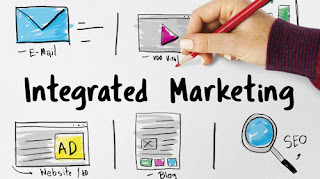In a recent blog on MarketingProfs, Sandra Stewart answers the call with five creativity boosters that are pure genius. What’s great about these five tools or exercises is that they can be used to generate greater productivity out of both marketing and business brainstorming sessions—you’ll find yourself using them in other meetings and scenarios where outside-the-box thinking is required. Here is a summary of her ideas for better brainstorming:
1. The Take Away. Less is more when it comes to communicating with authority and clarity. This prompt encourages your team to strip it down and avoid cluttering the message with excessive words and phrases. Her example:
“Say you're developing messaging for a new product, and you have a list of 12 key benefits. Truthfully, they can't all be essential, and you need much more focus to make messages memorable. So, take away a benefit and consider the result: Are you gaining in focus what you lost in comprehensiveness? Keep taking away, stripping away detail until you get to a benefits description that's as simple as it can be while still conveying something meaningful to your audience.”
2. Word Trees. This is opposite of the take away tool: “Start a Word Tree by listing words or terms related to a broad concept. Then, for each word, start a new list of related words. Keep branching out as you go, and continue for several generations.”
Word trees are great for developing brand attributes, product names, campaign themes, positioning statements, and more.
3. Oblique Strategies is a series of written prompts created by musician Brian Eno and artist Peter Schmidt as a way of breaking through creative blocks.
Prompts include directives such as "work at a different speed" or single words like “water." Sandra advises: “Consider the prompts in light of your process or problem, and use them to guide a new approach. For example, if we were developing messaging for a cleantech company, we might respond to "water" conceptually, by considering how the company's technology flows; or we might respond literally, by listing the ways it affects water use.
 4. The 5 Whys is an exercise for getting to the root of a problem (from Andrew Razeghi's The Riddle: Where Ideas Come From and How to Have Better Ones.)
4. The 5 Whys is an exercise for getting to the root of a problem (from Andrew Razeghi's The Riddle: Where Ideas Come From and How to Have Better Ones.)“First, turn your problem into a "why" question—say, "Why doesn't our story resonate with this market?" List your answers. Pick one—say, "We're not talking about the right things"—and ask "why?" Maybe the answer is, "They don't care about what we think they should care about." Then ask "why?" about that answer, and continue until you get to the fifth "why."
5. Blue Sky. “While the previous exercises involve constraints in some way, the Blue Sky exercise is the opposite: It involves envisioning what you would do or create if there were no limits (time, talent, money, laws of physics), and then working out what would have to be true for you to achieve that. Can you make some of those things true? Are there interim goals you can plot a course toward? Can you break the Blue Sky project down into steps? What can you do right now?”
Of course, after you generate the creative ideas, the next step is to develop a plan for executing.
Do you have other brainstorming ideas or tools that work for your team? Please share your thoughts with us—because there’s no such thing as too much creativity.
Ellen Moriarty




